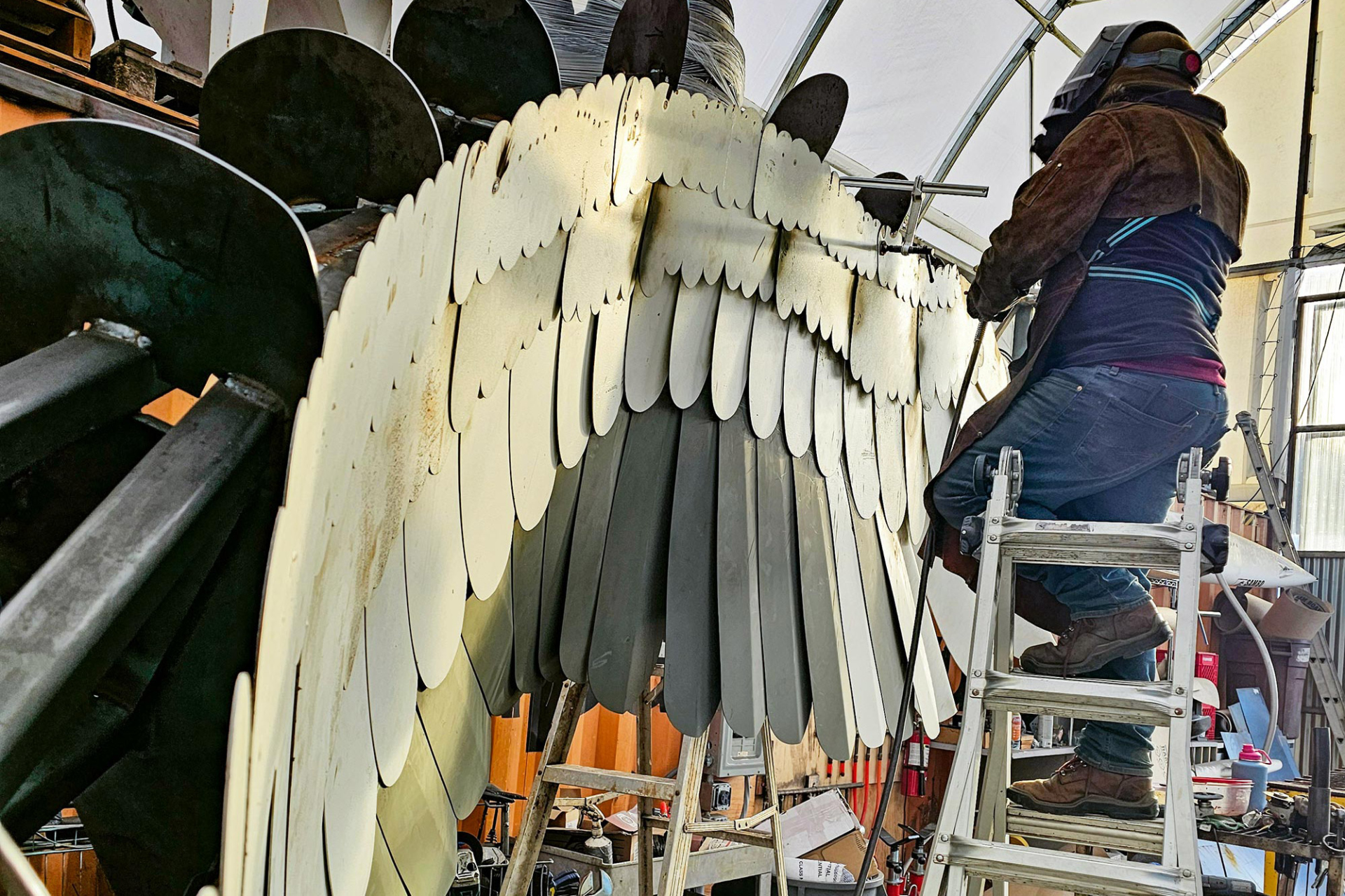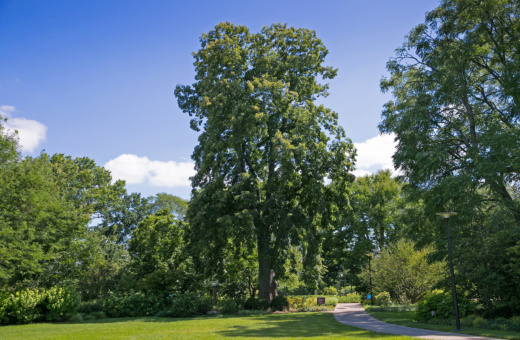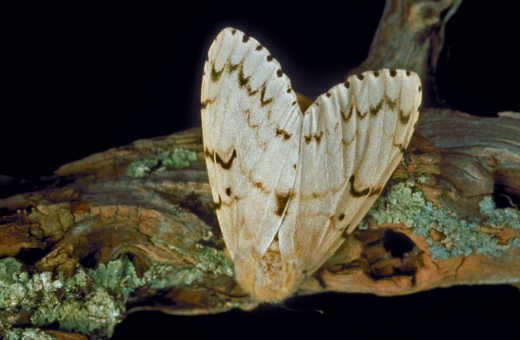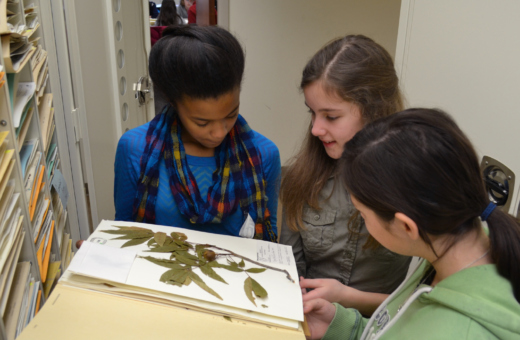Who’s That I See Among the Trees?
A curve and a swirl become a tail. Wide wings unfold and antlers spread. A giant deer grows from the earth. Colors bloom and glow. Artists are at work, bringing magical creatures into the world.
This spring, The Morton Arboretum will come alive with something both familiar and fantastic: five stunning sculptures of animals that live in Midwestern woods and wetlands set amid the Arboretum’s landscape of trees, plants, and water.
Vivid Creatures is a new exhibition of colorful sculptures as tall as trees that opens at the Arboretum May 17, 2025. The whimsically decorated artworks, some more than 20 feet tall, will mainly be arranged along on an easy walk near the Visitor Center. The exhibition will be free with admission to the Arboretum.
The sculptures have taken shape in the Portland, Oregon, studio of artist partners Heather BeGaetz and Fez BeGaetz. They have created animals with tales to tell. Spectra the snail, Scamp the squirrel, Nimbly the dragonfly, Generosity the deer, and Cadence the sandhill crane (above) will invite guests into the lives they live in neighborhoods and wild places right nearby. Think like me, the animals will say. Imagine yourself among the tree branches, beneath the leaves along the ground, darting through the sky. Be part of what I am a part of.
“It’s an opportunity to forge a new kind of personal connection with a familiar creature,” Heather said.
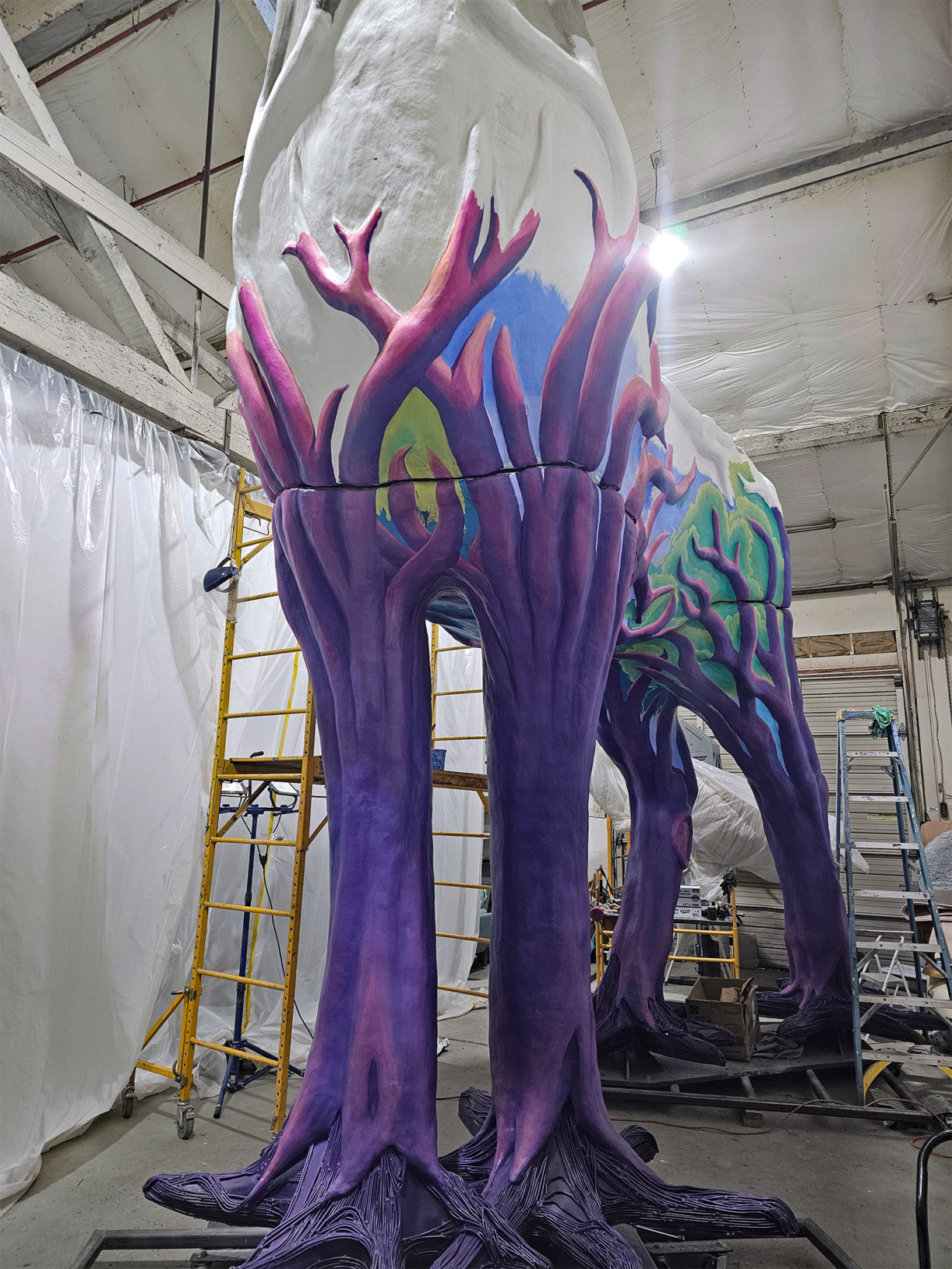
A giant white-tailed deer named Generosity is one of the colorful sculptures of familiar animals that have been created exclusively for a new exhibition at The Morton Arboretum.
Spectra the snail will greet motorists from the top of the high berm that separates the Arboretum from Interstate Highway 88. The other works will all be accessible along a walkable route that loops around Meadow Lakeand nearby paths. Amid tall trees and curving shorelines that create a backdrop of greens and earth tones, the route will create moments of anticipation and discovery as each sculpture comes into view.
Fez and Heather bring a wide range of experience to their collaborative work of creating grand, immersive artworks for outdoor art and music festivals, and now, as sculptors of this limited-time exhibition.
Fez spent a decade as a wilderness guide. Heather has a theatrical background—including as a maker of masks, with a skill for creating animals with friendly faces. They live and work in Portland with their young daughter Calliope.

Fez BeGaetz and Heather BeGaetz, who created the sculptures, are partners in art and life.
All three visited the Arboretum for inspiration. “We wanted to find out which animals are in that landscape, so we could create an opportunity for closeness with these creatures, at least in people’s imaginations,” Heather said.
Cranes were migrating overhead at the time, so a sandhill crane became one of the artworks. A stately buck with magnificent antlers personifies the many whitetail deer that live at the Arboretum. A snail—in nature a tiny, usually unnoticed animal that works slowly but surely to help break down leaf litter in the woods—was reimagined as a giant greeter overlooking the tollway.
A cheeky squirrel that approached Fez and Calliope outside the Administration and Research Center earned a place in the cast of characters. “Squirrels are in the woods, but they’re also in people’s neighborhoods. They’re such epic dancers in the tree canopy,” said Heather. “It’s fun to sculpt these creatures that are so common to people, but to show them in uncommon ways.”
Although the sculptures are far from literal depictions, they are informed by the animals’ real roles in nature and their places in the web of life. Intricate imagery on their surfaces connects to their roles in nature. The squirrel, for example, is decorated to show the animals’ role in propagating nut trees. The moon on the crane nods to the role of the night sky in guiding birds’ migrations. The buck sprouts oak leaves and the acorns that deer love to eat. “We’re representing some aspect of each creature’s story and the story of their relationships,” Heather said.
The sculptures are remarkable not only for their sheer size and striking forms but for their vivid colors. “We all know what a squirrel looks like,” Fez said. “But with the colors, we’re inviting people to play and to see beyond what they can normally see.”
Creating such monumental sculptures is a highly collaborative process for the pair. “We often design side by side at the computer,” Heather said. “I’ll be digitally sculpting the exteriors and designing the color palettes and textures and running things by him, and Fez will be sitting next to me and working in an architectural program on the interiors and figuring out how they go together.” A team of local artisans in Portland helps them to realize their designs.
Inside the artworks, welded steel armatures provide support. Since they are so large and heavy—the deer may weigh as much as five tons–they are being built in modules that can be taken apart to be trucked to Chicago and reconnected when they arrive onsite.
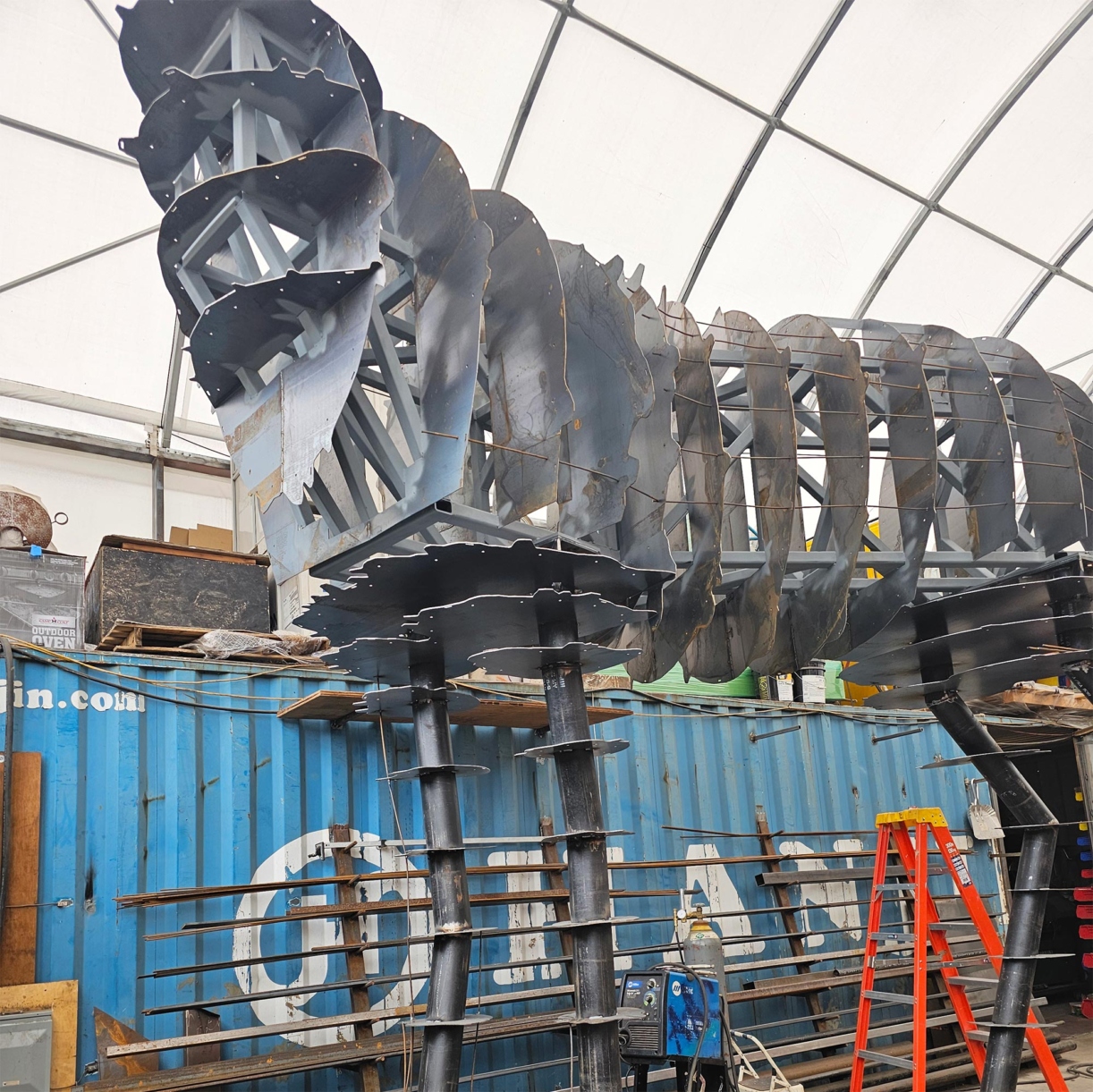
Welded steel creates a strong framework, or armature, for the far-more-than-life-size sculptures.
The artists incorporated as much recycled or sustainably sourced material as possible. About 80% of the steel has been recycled at least once and has a lower carbon footprint than most other materials used for large-scale sculptures.
In many parts of the sculptures, crushed aluminum foil tucked between the ribs of the armatures establishes contours and faces. Finally, the swirling, fantastical surfaces are hand-sculpted from a fiber-reinforced concrete material that can be molded like clay. Painted in a joyful kaleidoscope of colors and sealed, the surfaces can last for several years and will easily handle two years in the Chicago climate.
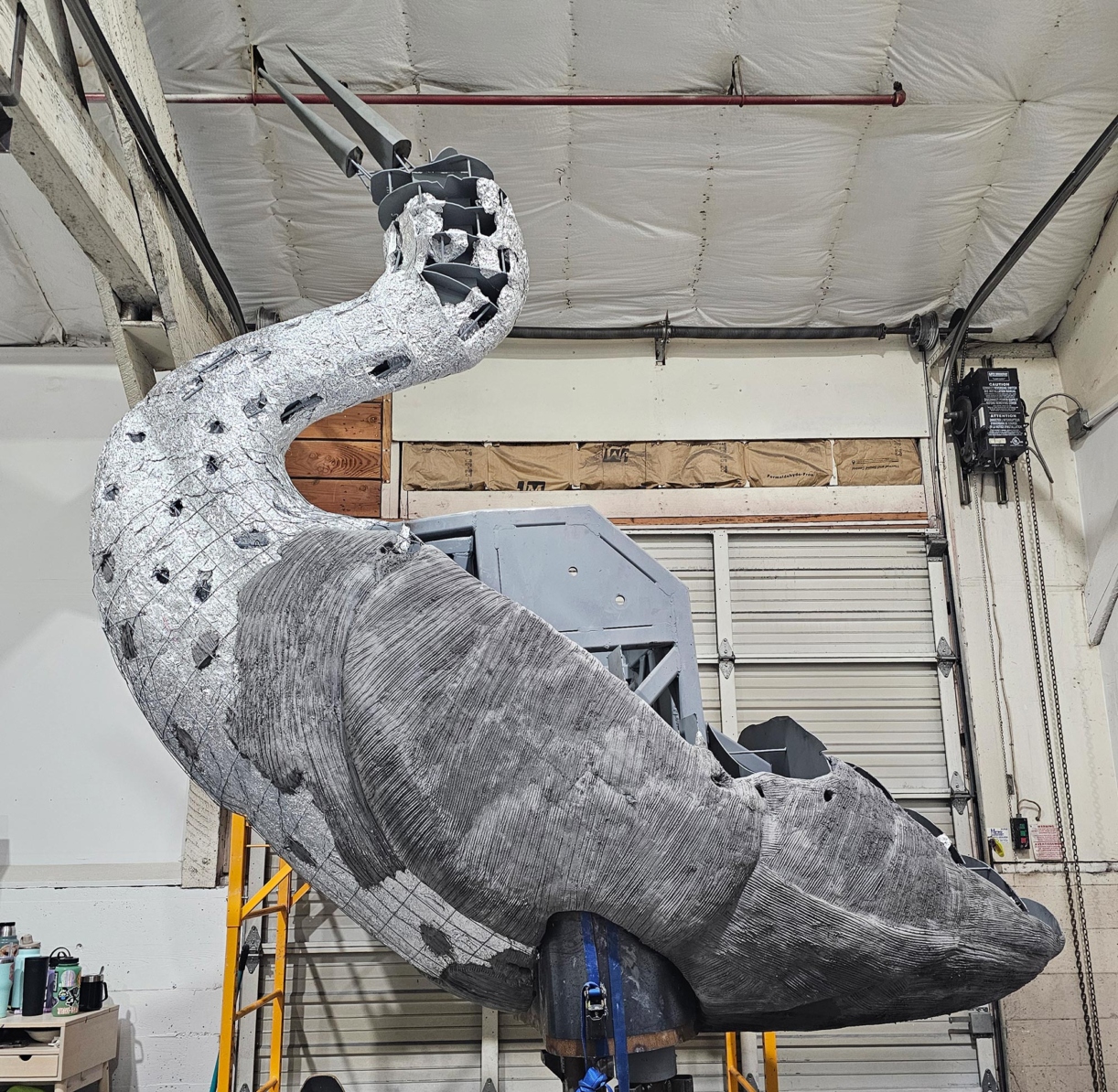
Aluminum foil packed around the armatures fills out the animals’ shapes.
Once the pieces have arrived in Lisle, the artworks can then take their places in the green, tree-filled landscape of the Arboretum, a perfect theater for this cast of larger-than-life characters.
“Part of what I love about large-scale outdoor art is that it becomes a backdrop,” Heather said. Unlike an art exhibit inside a hushed museum, “It’s a kind of stage in the world for people to experience their own lives in front of. They’re having a conversation, or they’re playing, or they’re making up their own games. And now these giant beings are theirs to take into their lives for the day.”
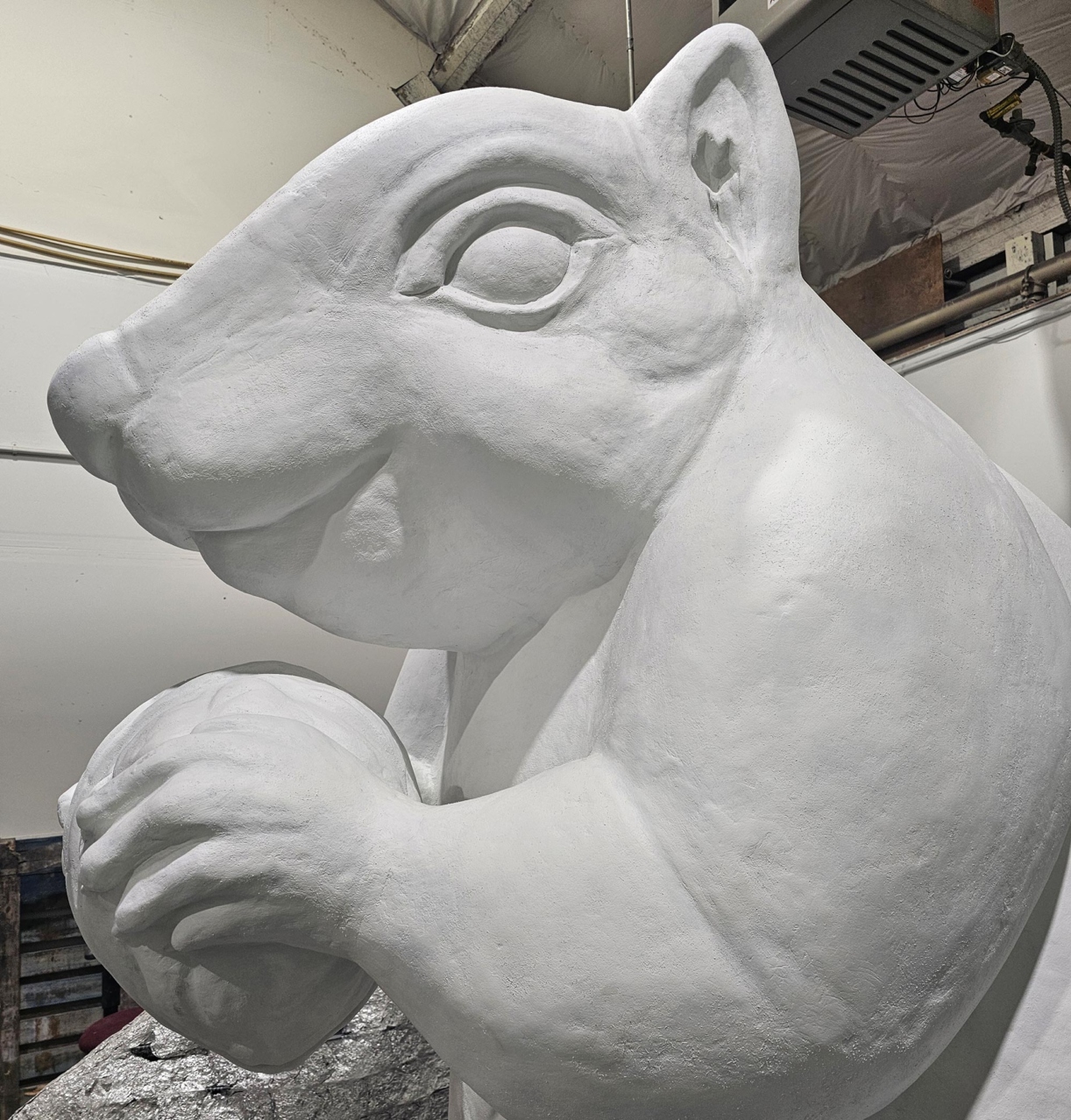
A concrete material makes a smooth surface for the final colorful painting.
